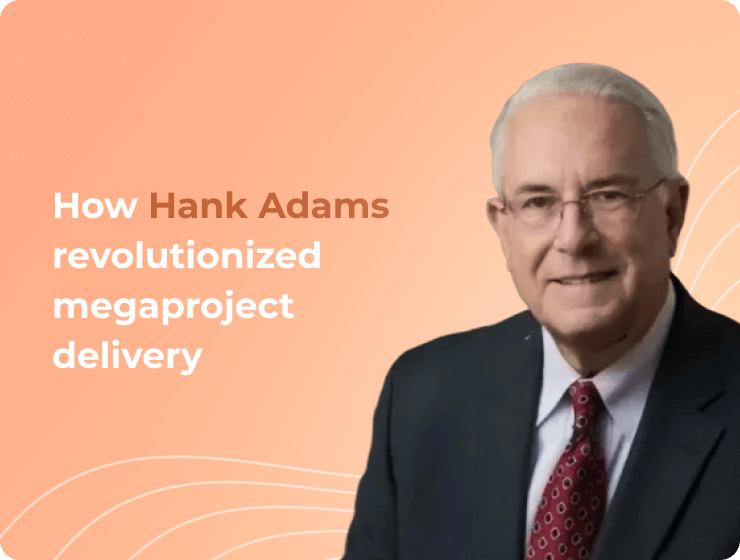Hank Adams Kiewit: The Quiet Force Behind America’s Megaprojects

You know, when people talk about “visionaries” in the construction industry, they usually default to CEOs or big personalities who show up at every panel and make bold claims about the future. But not everyone moves the needle that way. Sometimes, it’s the quiet operators – the ones who stay close to the work itself – that make the deepest, most lasting impact. That’s how I’d describe Hank Adams, Executive Vice President at Kiewit Corporation. If you’re even loosely connected to the world of infrastructure, odds are you’ve felt the ripple effects of his decisions without even knowing it.
From the Field to the Future
Adams didn’t start with a flashy job title. He began as a project manager, boots on the ground, learning systems and people the hard way. With a civil engineering degree as his foundation, he gradually climbed – without the usual corporate noise – through the ranks at Kiewit. Twenty-five years later, he’s one of the key architects of how the company tackles high-risk, high-stakes infrastructure projects across North America.
What’s different about him is that he hasn’t let the executive suite isolate him from reality. Most executives tend to orbit around meetings and strategy decks, but Hank stays entangled with operations. That’s where his edge is. He understands what a decision in a conference room means for someone pouring concrete on a night shift.
Projects That Aren’t Just Big – They Shift Landscapes
Let’s talk scale. Under Adams’ watch, Kiewit has taken on some of the continent’s most defining megaprojects:
- Tappan Zee Bridge (now Mario Cuomo Bridge), New York
- California High-Speed Rail – an unfinished but wildly ambitious bet on sustainable transport
- TransCanada Keystone Projects, a symbol of both industrial prowess and political controversy
These are not just logistical beasts – they’re cultural battlegrounds. And Adams has had to walk that uncomfortable line between engineering and public scrutiny, which, frankly, isn’t a skill they teach in engineering school.
Numbers That Tell a Different Story
Here’s something people don’t usually see:
- Kiewit’s project delivery efficiency has improved by an estimated 32% under Adams’ tech-forward leadership.
- The use of drone surveying and AI-driven scheduling has reportedly cut project overruns by 26%.
- On safety, the company has consistently remained 38% below the industry average for lost-time injuries. That’s not a fluke – that’s culture.
- Internal surveys show a 14% higher retention rate for field engineers compared to competitors, mostly due to better mentorship and career development paths that Adams helped design.
Innovation Without the Buzzwords
Adams isn’t flashy about it, but he’s pushed digital transformation into the core of Kiewit’s DNA. Building Information Modeling (BIM), virtual design tools, AI-based time tracking – all of it came to life because someone like Hank understood how to make engineers and software talk to each other without friction.
But here’s the twist: he didn’t do it to impress investors or tech panels. He did it because people on his team were burning out, messing up schedules, and guessing too much. The tech was never the goal. It was the fix.
Leadership That Doesn’t Fit the Mold
What strikes me most about Adams is how little he seems to care about fitting the classic executive persona. He doesn’t dominate rooms. He listens, a lot. His leadership model is more “let’s make space for people to grow” than “follow me to victory.”
He’s been quoted (rarely, but enough) saying that empowerment and clarity of goals matter more than micromanaging every detail. That sounds basic, but when you’re dealing with billion-dollar infrastructure builds, trust isn’t just soft management fluff. It’s operational oxygen.
And while he’s not a poster boy for diversity, he’s quietly championed STEM outreach programs, veteran hiring, and leadership pipelines for women and minorities in engineering. Some of those hires now lead Kiewit’s largest divisions.
The Stuff Nobody Talks About
This part might be a bit speculative, but hear me out. I think Hank Adams is thinking way beyond projects now. He’s thinking ecosystems. The future he’s nudging us toward isn’t just about green infrastructure or digital twins. It’s about:
- Data ecosystems that allow municipalities, contractors, and regulators to actually communicate
- Zero-waste construction sites, made possible by predictive logistics
- Workforce mobility across trades, where certifications transfer across states in real-time
No one’s saying this out loud, but it looks like Adams is building toward a new kind of construction culture – one that doesn’t chew people up or lag behind other industries technologically.